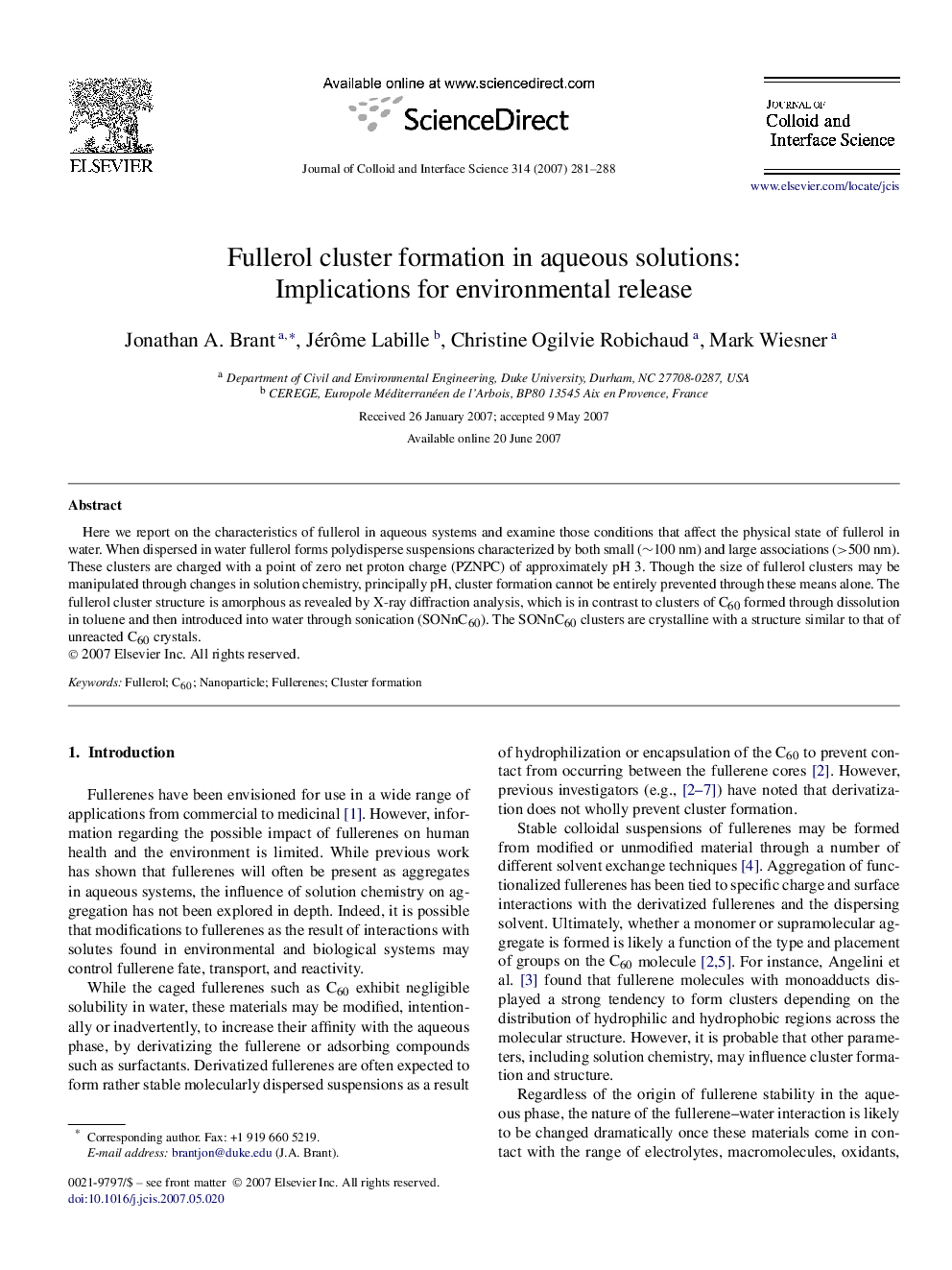| Article ID | Journal | Published Year | Pages | File Type |
|---|---|---|---|---|
| 612238 | Journal of Colloid and Interface Science | 2007 | 8 Pages |
Here we report on the characteristics of fullerol in aqueous systems and examine those conditions that affect the physical state of fullerol in water. When dispersed in water fullerol forms polydisperse suspensions characterized by both small (∼100 nm∼100 nm) and large associations (>500 nm>500 nm). These clusters are charged with a point of zero net proton charge (PZNPC) of approximately pH 3. Though the size of fullerol clusters may be manipulated through changes in solution chemistry, principally pH, cluster formation cannot be entirely prevented through these means alone. The fullerol cluster structure is amorphous as revealed by X-ray diffraction analysis, which is in contrast to clusters of C60 formed through dissolution in toluene and then introduced into water through sonication (SONnC60). The SONnC60 clusters are crystalline with a structure similar to that of unreacted C60 crystals.
Graphical abstractFigure optionsDownload full-size imageDownload as PowerPoint slide
